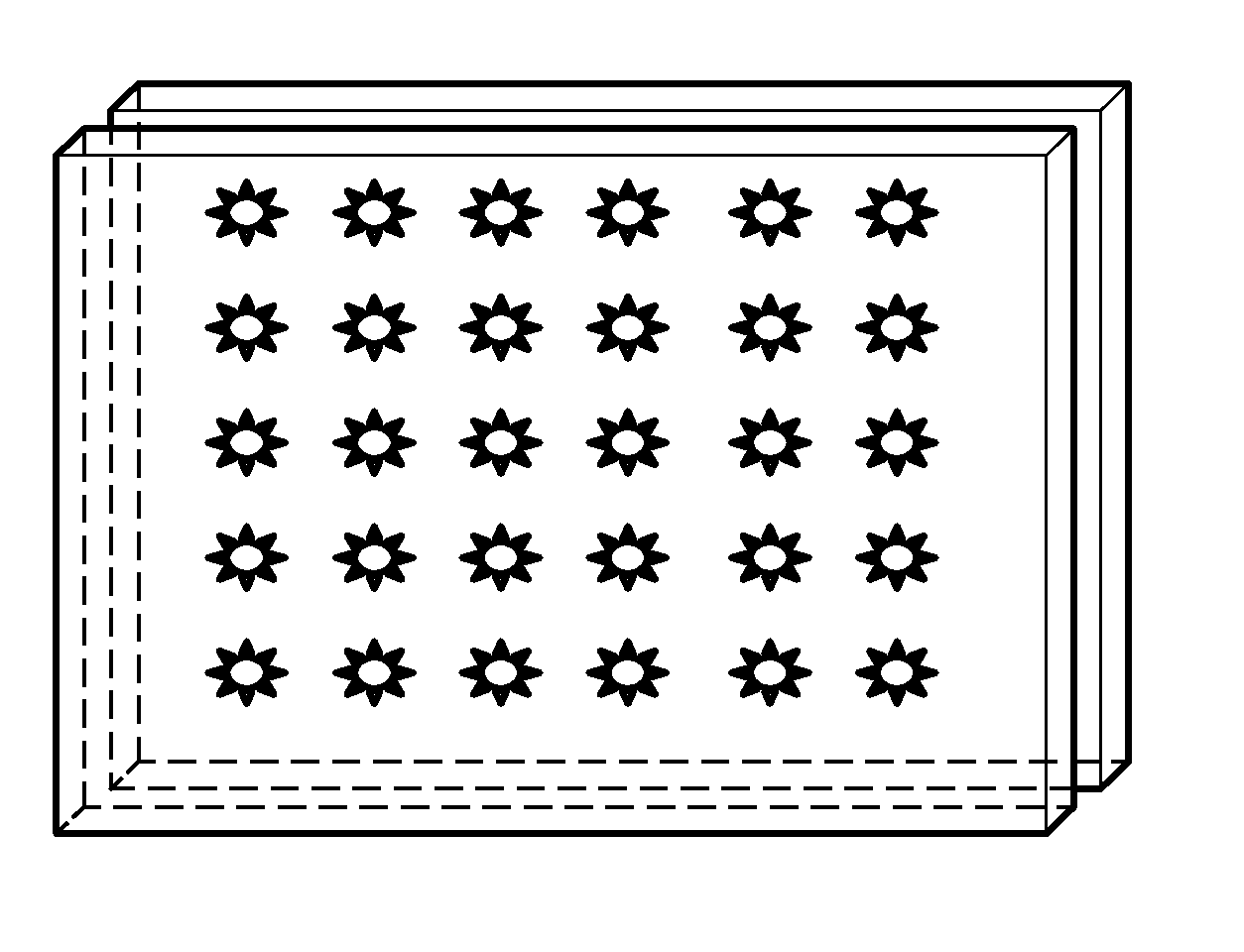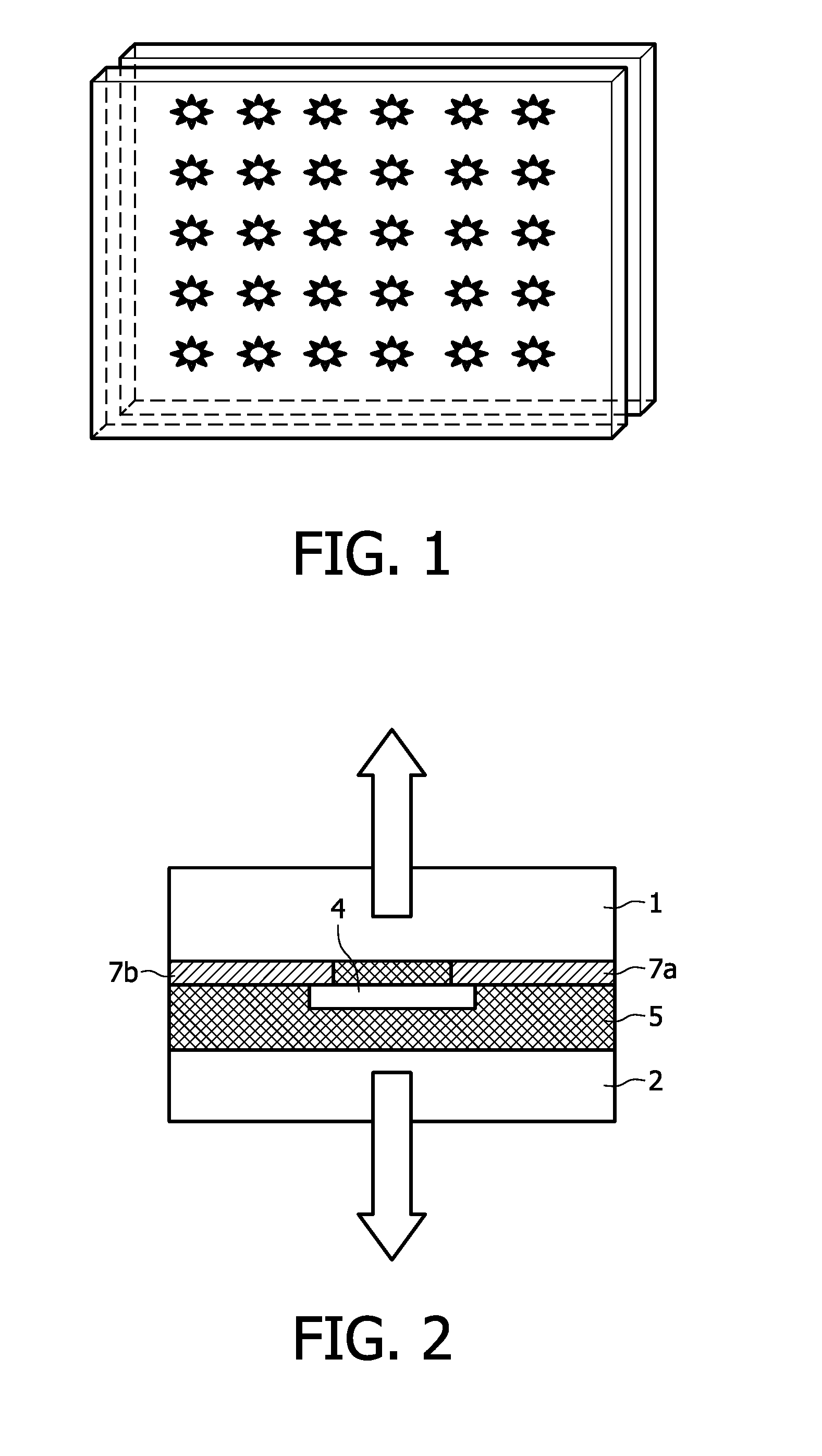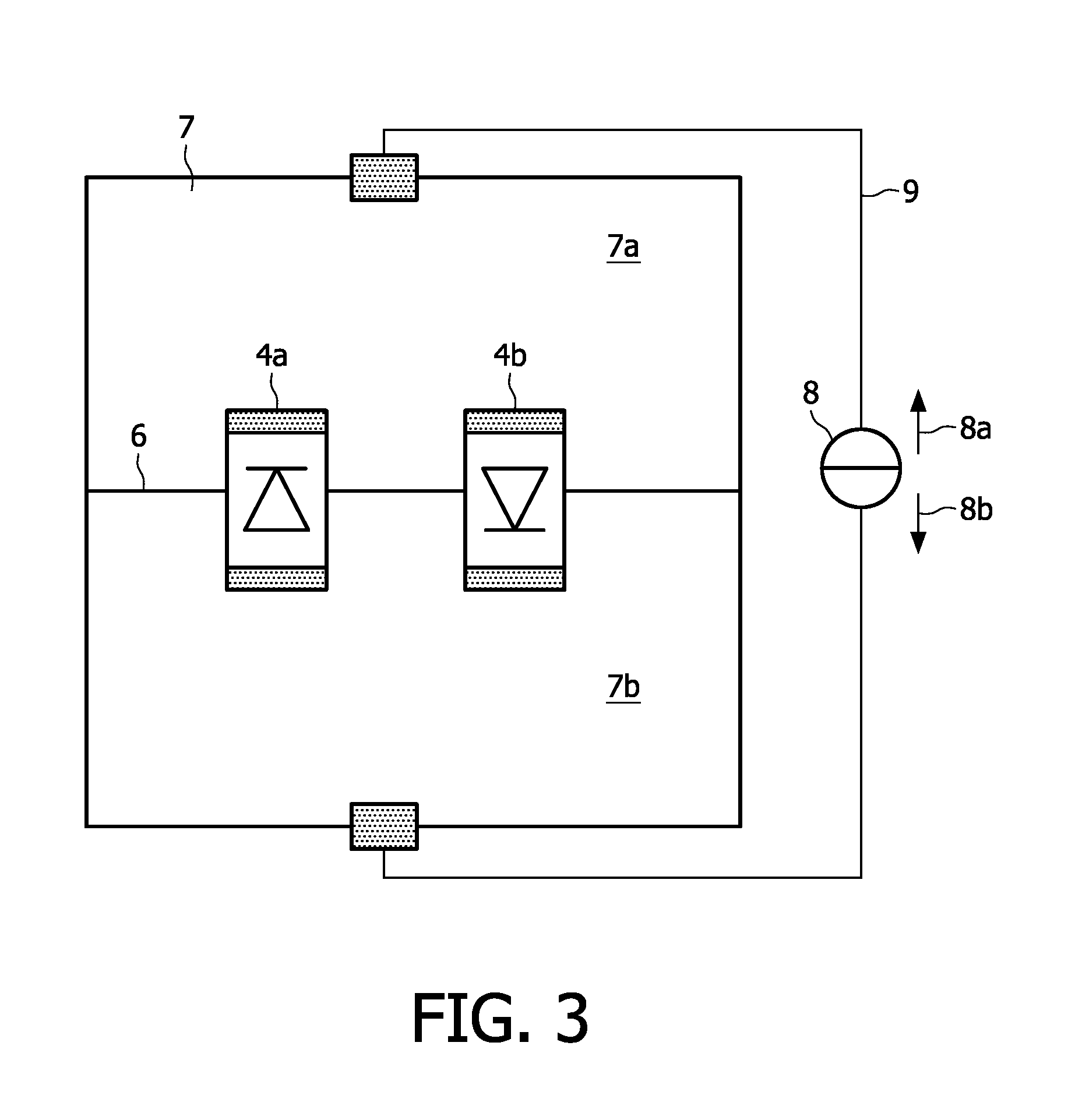Light output device
a technology of light output device and led glass, which is applied in the direction of lighting and heating apparatus, process and machine control, instruments, etc., can solve the problems of high electrical losses in these wires, add to the cost of the device, and difficulty in providing a structure which allows individual leds in the glass
- Summary
- Abstract
- Description
- Claims
- Application Information
AI Technical Summary
Benefits of technology
Problems solved by technology
Method used
Image
Examples
Embodiment Construction
[0040]The structure of an LED in glass illumination device is shown in FIG. 2. The lighting device comprises glass plates 1 and 2. Between the glass plates are (semi-) transparent electrodes 7a and 7b (for example formed using ITO), and a LED 4 connected to the transparent electrodes 7a and 7b. A layer of thermoplastic material 5 is provided between glass plates 1 and 2 (for example PVB or UV resin).
[0041]The glass plates typically may have a thickness of 1.1 mm-2.1 mm. The spacing between the electrodes connecting to the LED is typically 0.01-3 mm, for example around 0.15 mm. The thermoplastic layer has a typical thickness of 0.3 mm-2 mm, and the electrical resistance of the electrodes is in the range 2-80 Ohm, or 10-30 Ohms / square.
[0042]The electrodes are preferably substantially transparent, so that they are imperceptible to a viewer in normal use of the device. If the conductor arrangement does not introduce a variation in light transmission (for example because it is not patter...
PUM
| Property | Measurement | Unit |
|---|---|---|
| electrical resistance | aaaaa | aaaaa |
| transparency | aaaaa | aaaaa |
| transparency | aaaaa | aaaaa |
Abstract
Description
Claims
Application Information
 Login to View More
Login to View More - R&D
- Intellectual Property
- Life Sciences
- Materials
- Tech Scout
- Unparalleled Data Quality
- Higher Quality Content
- 60% Fewer Hallucinations
Browse by: Latest US Patents, China's latest patents, Technical Efficacy Thesaurus, Application Domain, Technology Topic, Popular Technical Reports.
© 2025 PatSnap. All rights reserved.Legal|Privacy policy|Modern Slavery Act Transparency Statement|Sitemap|About US| Contact US: help@patsnap.com



